Infrastructures of the Institute of Software Technology and Engineering (ITIS)
ITIS infrastructures are divided into four groups according to the area in which they are being used.
The application areas are:
- Data Analytics and Big Data
- Fog Computing
- Cybersecurity
- Mobile Communications.
1. Data Analytics and Big Data
Infrastructure consisting of three nodes with dedicated HW/SW for the development and deployment of big data analytics applications.
Node 1:
Cluster with 688 cores (of which 384 cores dedicated to compute) provided by Intel Xeon Skylake Gold 6140 v5 processors (16 cores per processor, 2.10Ghz), 7.13TB of RAM and 1.328TB of storage. It includes tools and services (TITAN, BIGOWL) for the generation and use of big data workflows in industry and research, as well as services for the harmonisation of the semantic web from multiple sources, the integration and analysis of biomedical data, the observation of the Earth from satellite data (using the Copernicus programme), the processing and analysis of agro-environmental services, services for “test before invest” (proof of concept and prototyping) and, finally, collaborative research and innovation. It has been used in transfer projects with companies (Ericsson, Turismo Costa del Sol, Troops), especially in the application areas of health and agriculture.
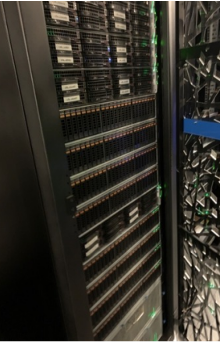
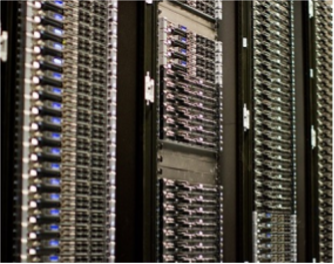
Node 2:
384-core platform (6 servers with 2 Intel Xeon Platinum 8358 32-core 2.GHz processors each), 7TB of RAM and 383TB of storage. This infrastructure provides a development environment for big data analytics applications based on the use of OpenStack and Docker containers to deploy services into production. It is currently used for experimental studies using technologies such as Apache Spark, Kafka, Neo4J, MongoDB and Apache Hadoop. The node is integrated into the European Science Open Cloud (EOSC) as part of Lifewatch ERIC, specifically the Internal Joint and Collaborative Initiative (Lifewatch IJI). Fourteen workflows and more than 150 data analysis components have been developed in the fields of air, flora, fauna and soil. The development of the EnBiC2-Lab project has created the core of what will become the European scientific data platform of Lifewatch ERIC.
Node 3:
GPU infrastructure based on two AMD EPYC™ 9334 2.7GHz 32-core CPUs with maximum clock speed up to 3.9GHz for a total of 64 threads and 16 x DDR5 4800MHz 32GB ECC REG RAM. It features 4 NVIDIA® A100 Module 80GB HBM2 ECC PCIe Gen4 Passive Ampere GPUs, 80GB HBM2 memory with 1.935TB/s bandwidth. Also includes FP64 CUDA cores: 3,456 FP32 CUDA cores: 6,912 Tensor cores: 432 Streaming multiprocessors: 108 FP64: 9.7 teraFLOPS FP64 Tensor core: 19.5 teraFLOPS FP32: 19.5 teraFLOPS NVIDIA NVLink 600 GB/s** interconnect, PCIe Gen4 64 GB/s up to 2 GPUs. Also includes 2 NVIDIA® H100 PCIe 80GB GPUs, 80GB HBM2e memory with 2TB/s bandwidth. For storage, it has a 1SSD MICRON 7400 PRO 3.84TB U3 PCIe NVMe x 4 2.5. It focuses on deep learning and large language model tasks.
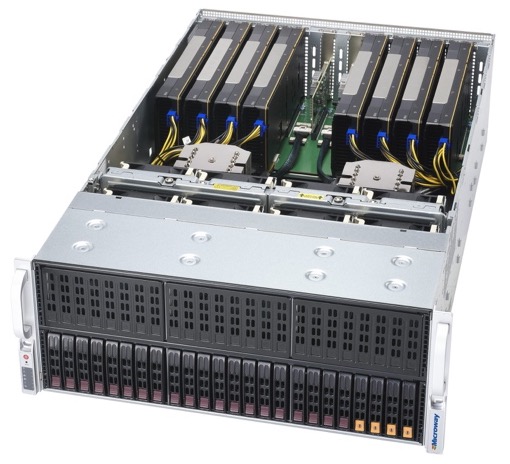
2. Fog Computing
Infrastructure with 364 cores provided by 7 servers (Intel Xeon SP G6230R, 26 cores, 2.1GHz), 448GB of graphics memory provided by NVIDIA V100 cards (5120 Cuda cores, 32GB RAM), 384GB of RAM and a total of 12.8TB of storage. It also includes two portable edge nodes with an Intel Xeon D2187NT processor (16 cores, 2GHz), an Nvidia T4 graphics card and support for Wifi and LTE/4G wireless communications. It provides a production environment through Kubernetes for developing critical applications with low latency on Docker containers. These applications can take advantage of GPU acceleration for compute-intensive and float-intensive techniques, such as machine learning. The infrastructure will be used in the context of several national and international research projects, including the monitoring of the structural health of civil infrastructure, the generation of digital twins and the analysis of smart grids. It is also worth mentioning the collaboration with the company Cepsa for the generation of soft sensors for the production of lubricants.
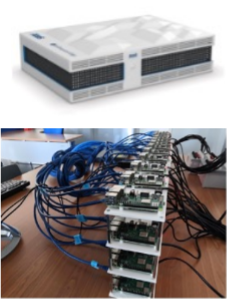
3. Cybersecurity
Infrastructure consisting of four nodes with dedicated HW/SW for the development and deployment of cybersecurity applications.
Node 1:
The industrial testbeds consist of Siemens WinCC Professional SCADA software, 14 advanced controllers from different manufacturers (e.g. Siemens, Schneider, Omron), proprietary controllers deployed on IoT development boards (e.g. Intel Galileo, Arduino, RPi), several gateways with support for various industrial protocols (e.g. Intel Galileo, Arduino, RPi), several gateways with support for various industrial protocols (e.g. PROFINET, OPC UA, EtherNet/IP/IP, CAN/OPEN, etc.), 9 industrial PCs, 8 HMIs and 3 large monitors. PROFINET, OPC UA, EtherNet/IP, EtherCAT, ModbusTCP, BACnet/IP or CAN/CANOPEN etc.), 9 industrial PCs, 8 HMIs and 3 large monitors, several Siemens branded readers (including one optical and several RFID), 9 Siemens distributed I/O systems (including ET 200SP and ET 200SP Open Controller), dedicated servers for solution hybridisation and digital twin deployment, IIoT development kits (WirelessHART and ISA100. 11a), generic IoT sensors, 3 Fischertechnik professional training mock-ups and licences for the management, configuration and programming of the various devices.
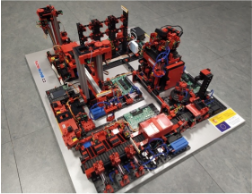

Node 2:
The Blockchain infrastructure is primarily focused on working with permissioned networks based on technologies such as Hyperledger Fabric, Hyperledger Besu and Consensys Quorum, and is oriented towards the deployment of applications and the study and analysis of security applied to blockchain environments. Nodes of the Alastria, Ethereum and NuCypher networks are currently deployed and running. This infrastructure runs on 2 Dell PowerEdge R440 servers, each with 2 Intel Xeon Sirver 12-core/24-thread CPUs, 256 GB of RAM, 4 TB of SSD disk and 16 TB of HDD disk storage.
Node 3:
EV-Urban Lab” platform for the study of safety applied to electric vehicle charging station management environments, as well as for conducting experiments by the university community. This platform currently consists of 4 charging stations deployed in different locations on the university campus and a photovoltaic system to generate electricity from sunlight. It is also integrated, both with the UMA’s FIWARE and with a blockchain network, to dump data related to the status and operation of the different elements that are part of the charging infrastructure.
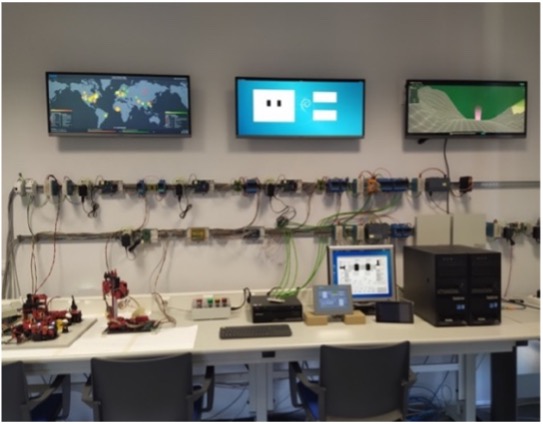
Node 4:
Dedicated equipment for forensic analysis of various devices with software tools such as IDA Pro, Encase Forensic Deluxe and AccessData Forensic Toolkit for reverse engineering, malware analysis, digital evidence recovery and forensics.
4. Mobile Communications
Private 4G/5G mobile network for research, combining open source and commercial elements. It consists of several environments:
Environment 1:
The Ada Byron research building, which has its own indoor and outdoor radio deployment; the Larios street environment in Malaga city centre, shared via MOCN with Telefonica and the Malaga Local Police; and the Malaga port and Torremolinos promenade environment, shared via MOCN with Telefonica. These cells are connected to local network cores located in the Ada Byron building to provide a complete private network. There is also a heterogeneous platform combining different virtualisation technologies with a total computing capacity of 328 cores (8 servers with Intel Xeon E5-26xx/Gold 63xx/Gold 5220 processors), 1,130 TB of RAM and 70 TB of storage. There are also two Keysight UXM mobile network simulators (one 4G and one 5G) and two anechoic cameras. There are also several mobile devices for testing: UEs and commercial modems and drive test software (Keysight’s Nemo Outdoor and Nemo Handy).
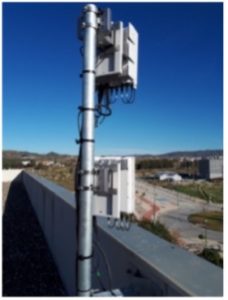
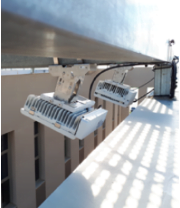
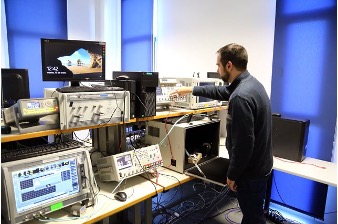
Environment 2:
Indoor and outdoor deployments in the Ada Byron building with Nokia cells that, in collaboration with Telefónica, allow operation in its commercial spectrum in both LTE Band 7 (2600 MHz) and 5G Band n78 (3500 MHz). Both 5G modes are supported: Non Stand Alone and Stand Alone. The outdoor deployment includes equipment in the n258 millimetre band (26 GHz). The indoor deployment also includes an Accelleran O-RAN solution (1 RU n78 band + CU + DU). The heterogeneous platform provides different resources for virtualising network functions and deploying different services, specifically 3 Polaris network cores: two 4G/5G NSAs and one 5G SA and one 5G Open5GS core.
Both environments have 2 k8s computing clusters for the development and deployment of services running on the 4G/5G network. Since their commissioning at the end of 2019, several European projects have been developed using this mobile infrastructure. The main ones are listed below: 5Genesis, Affordable5G, BroadWay, Evolved-5G, 5G-Epicentre, FIDAL and 5G-SANDBOX.
